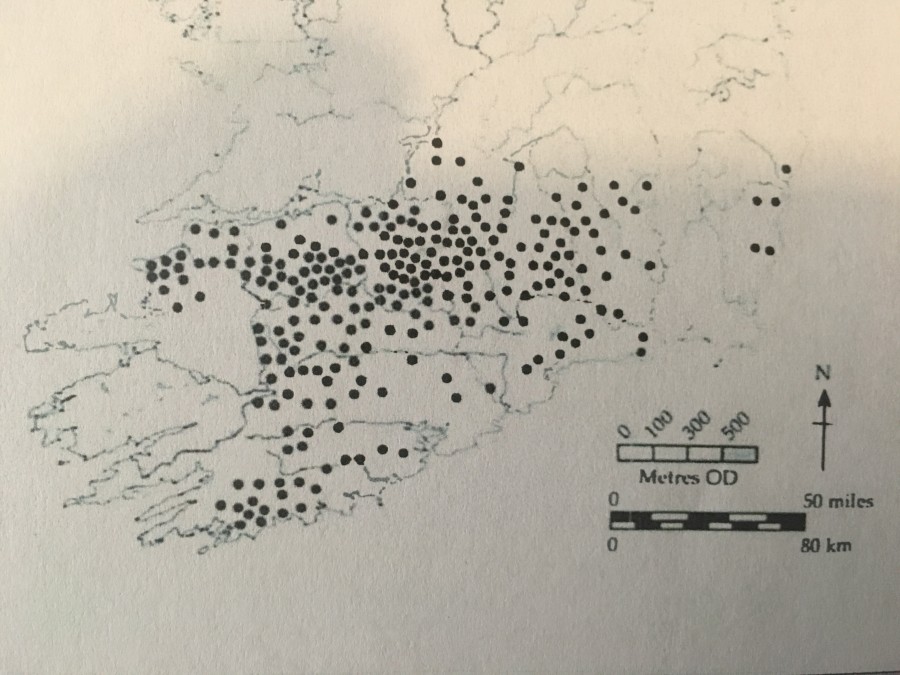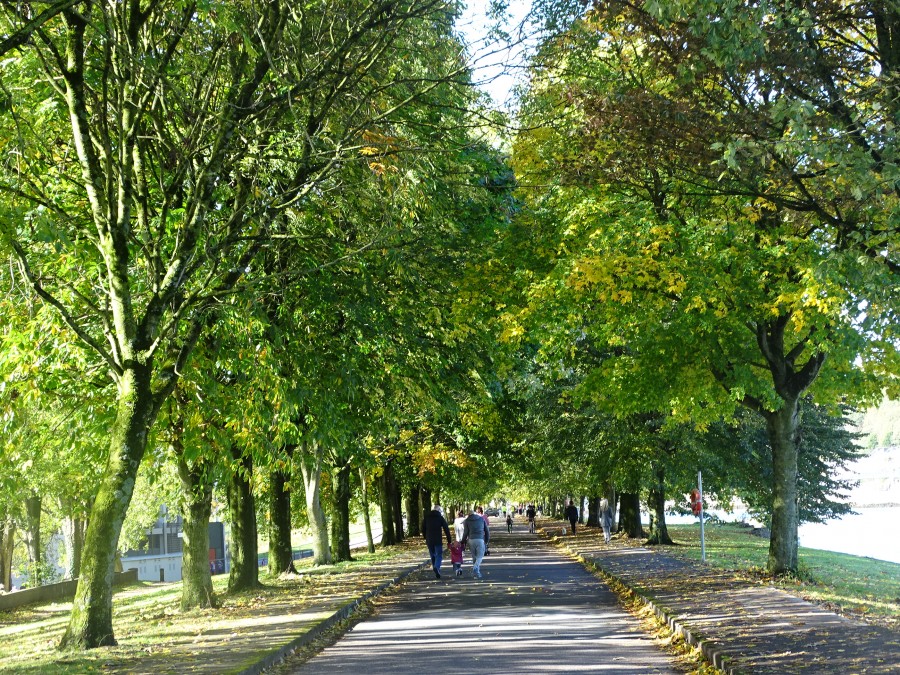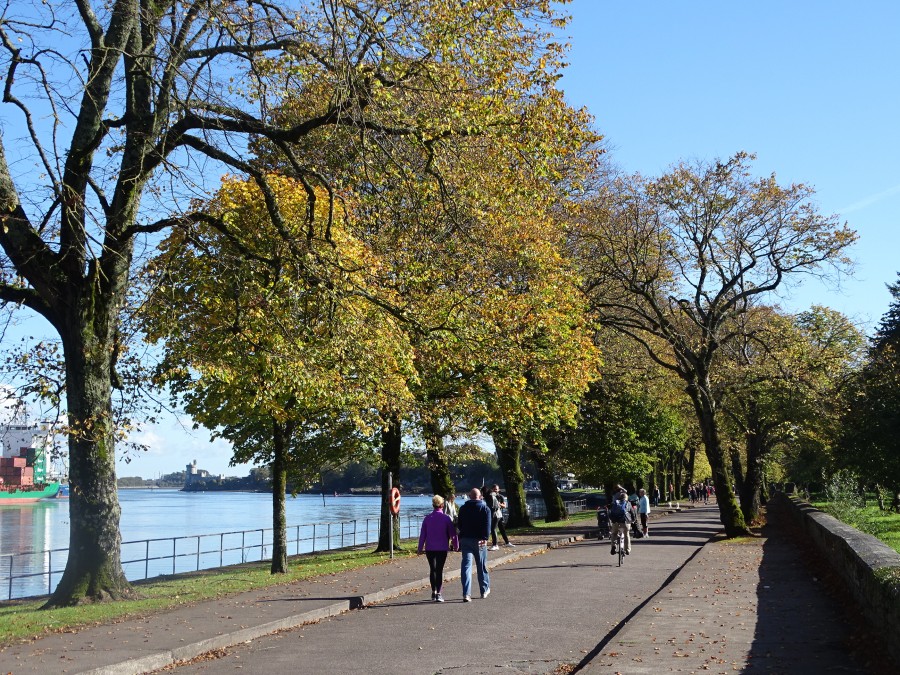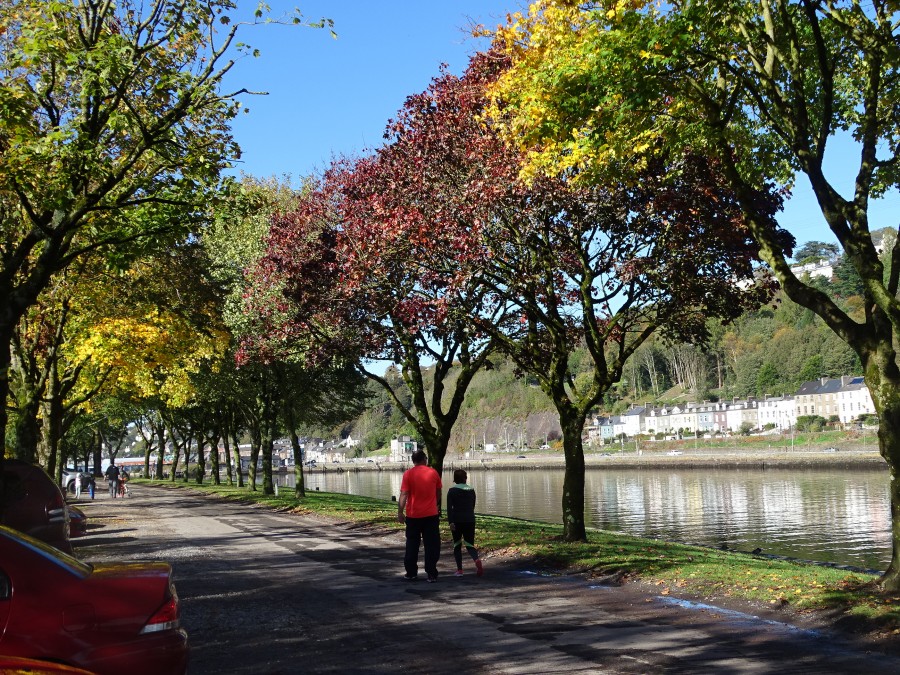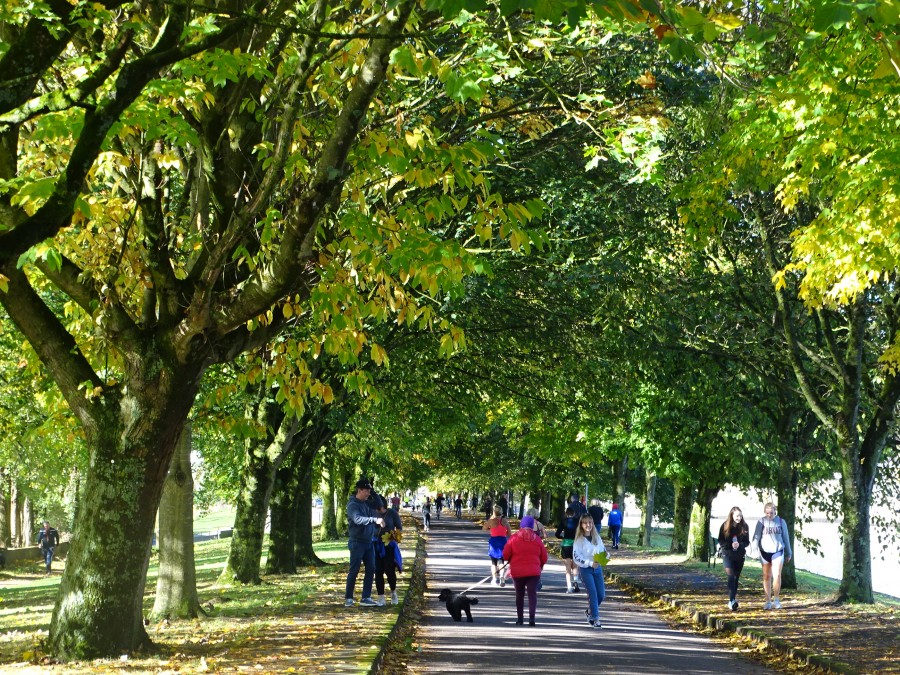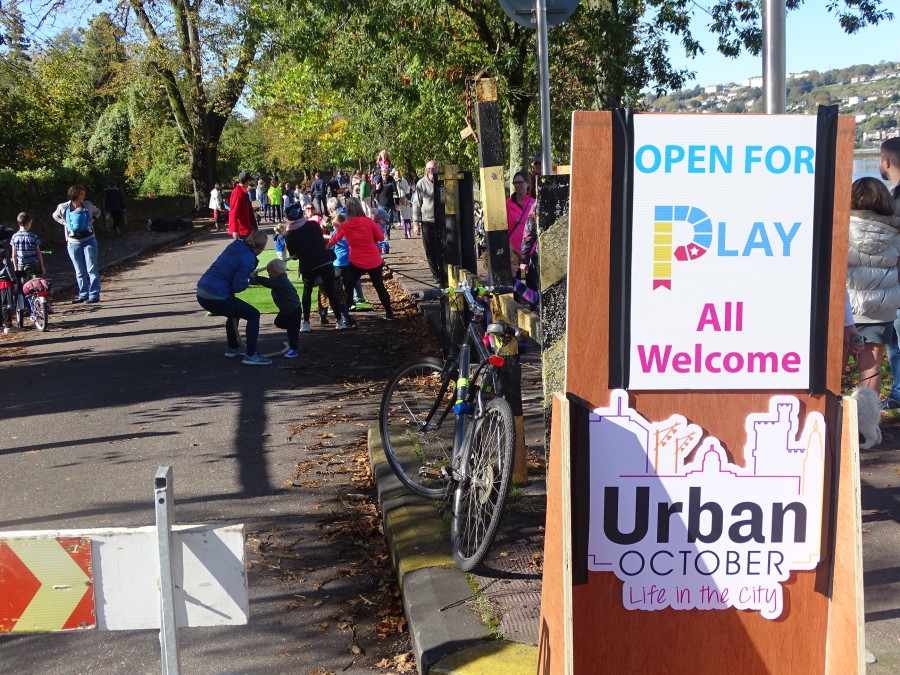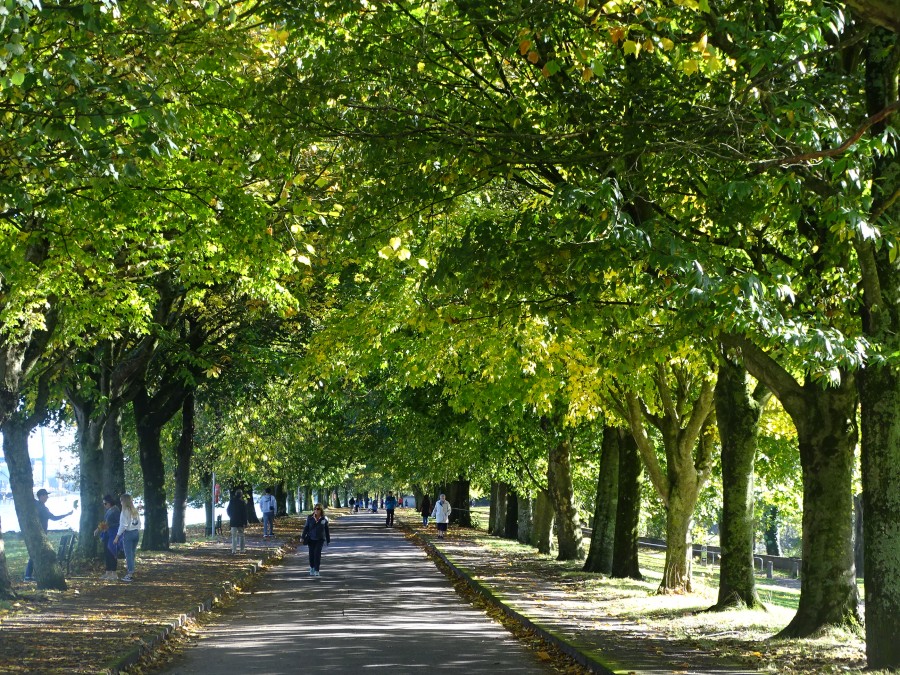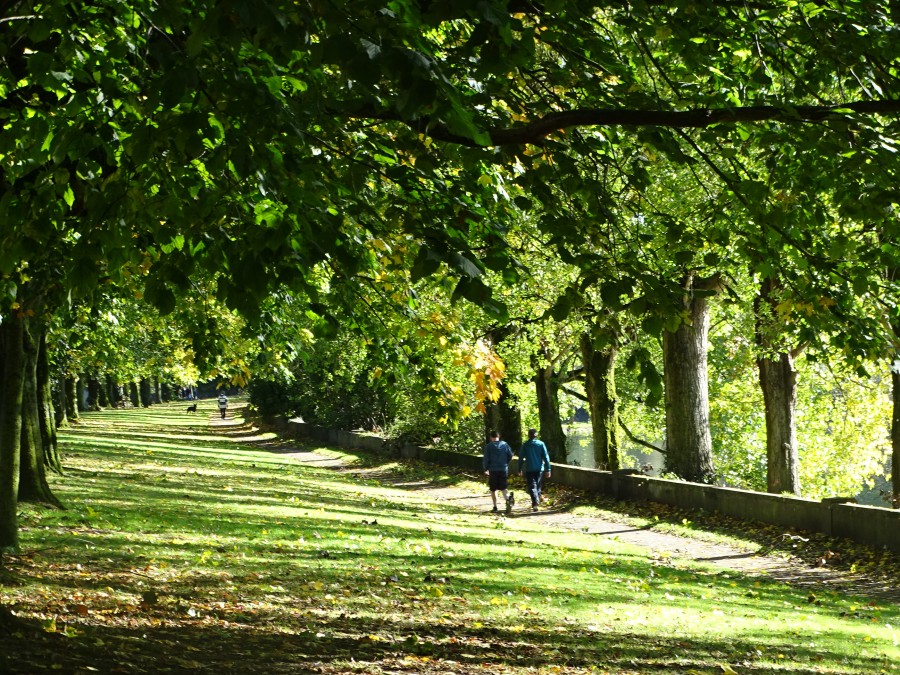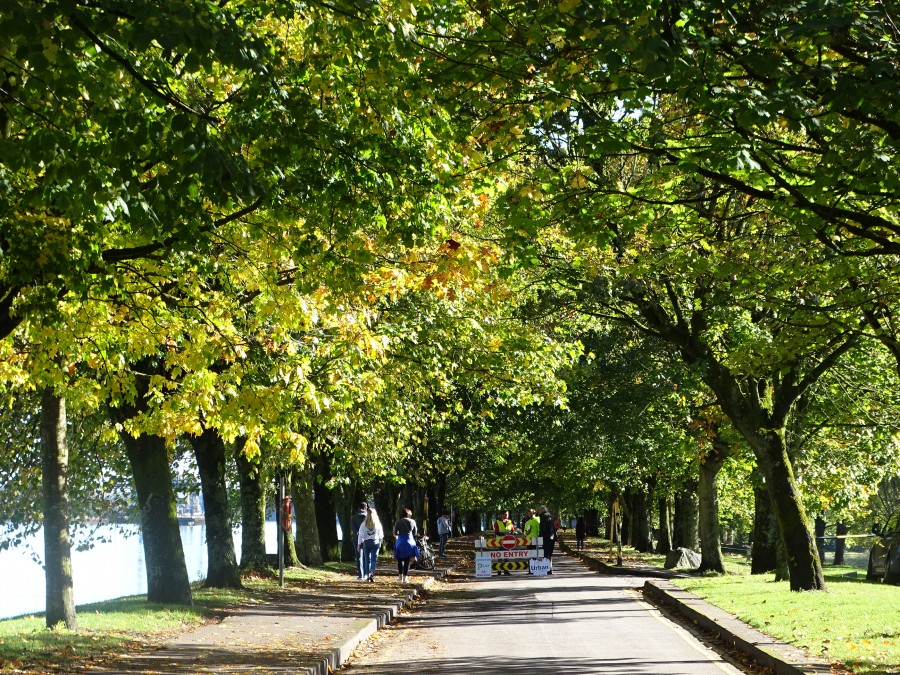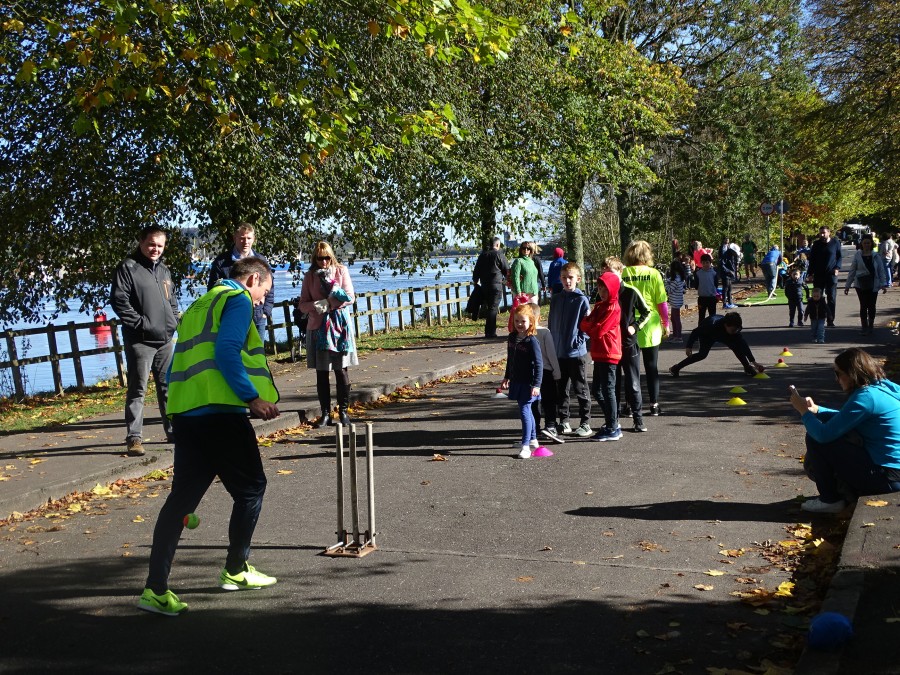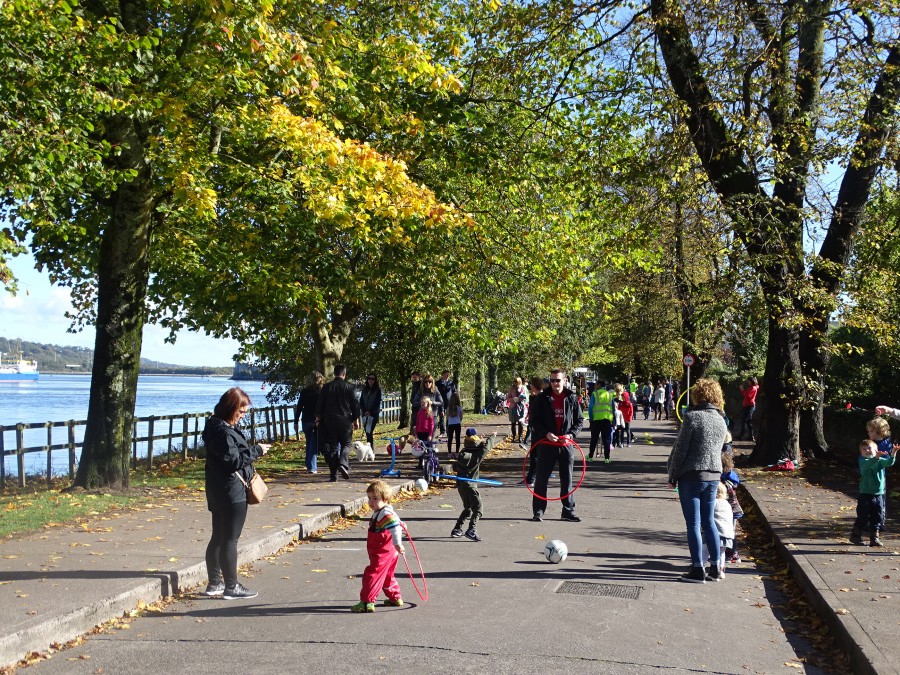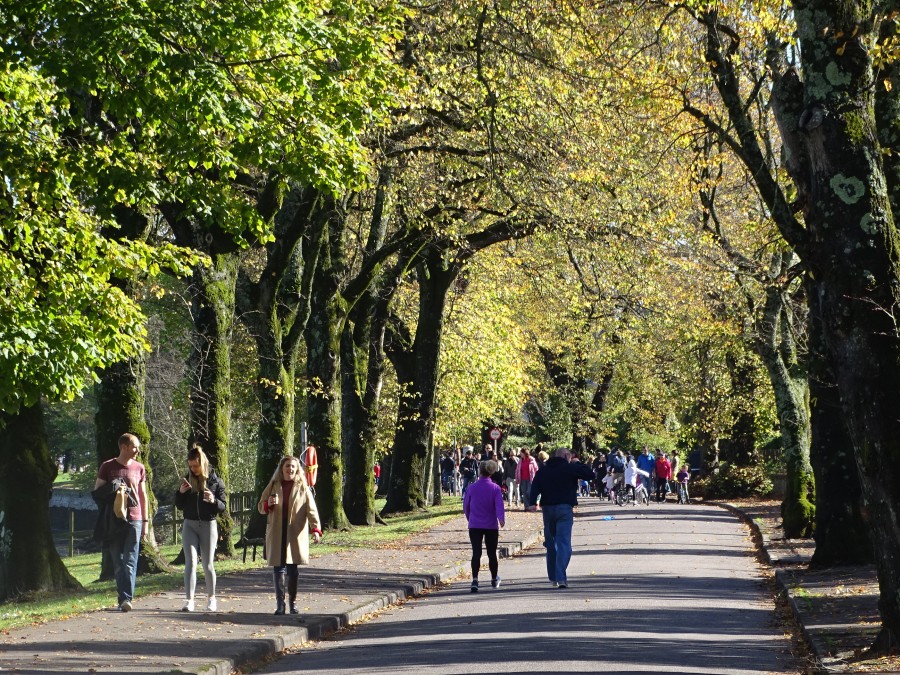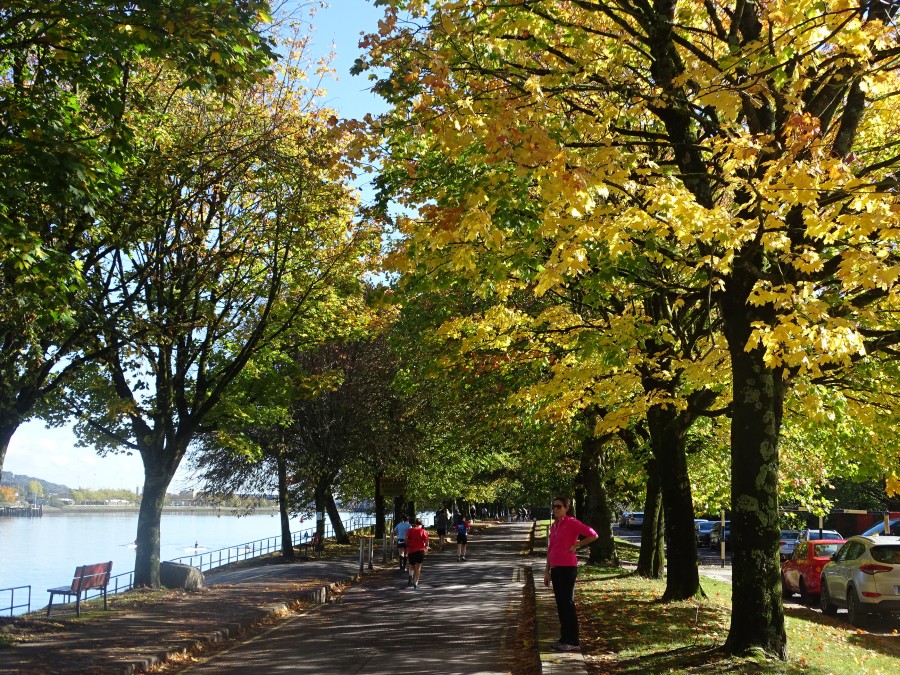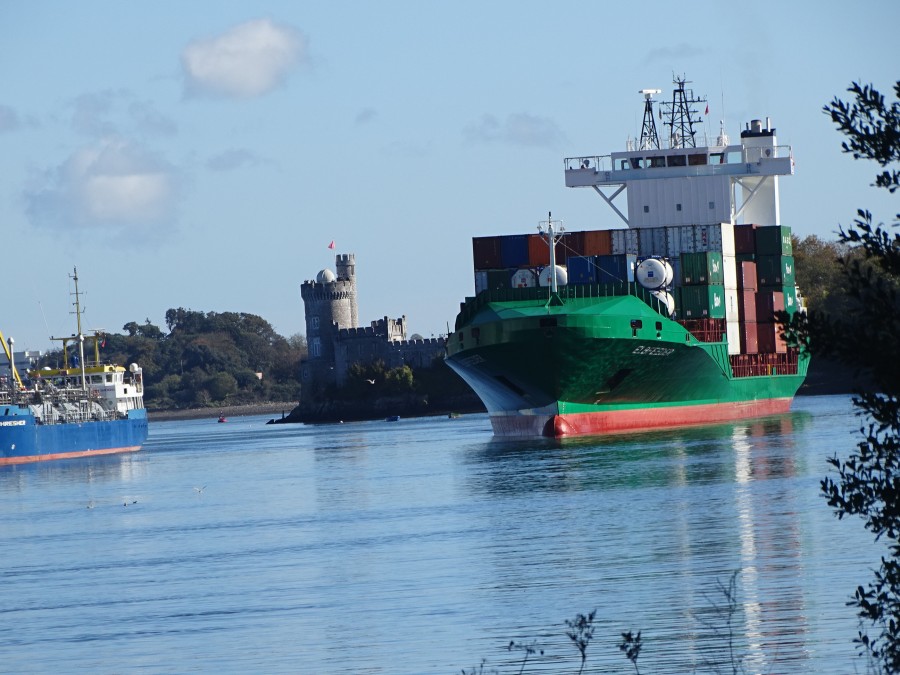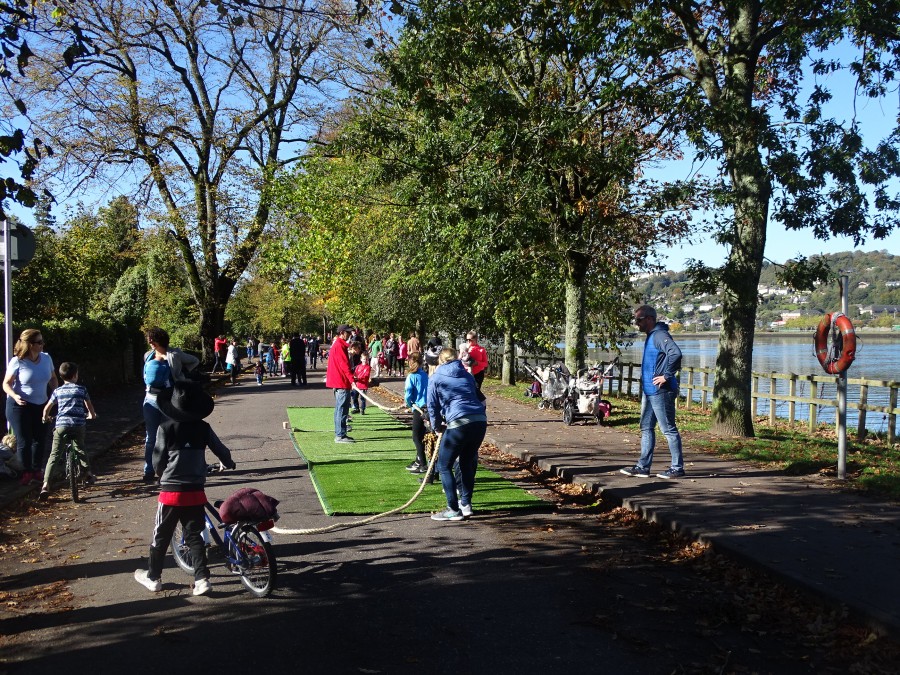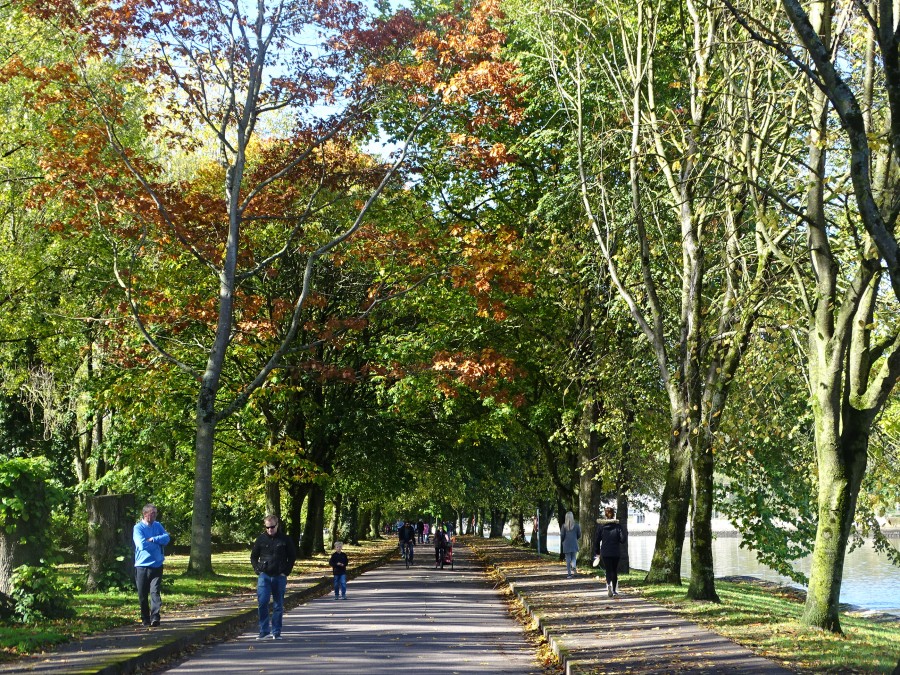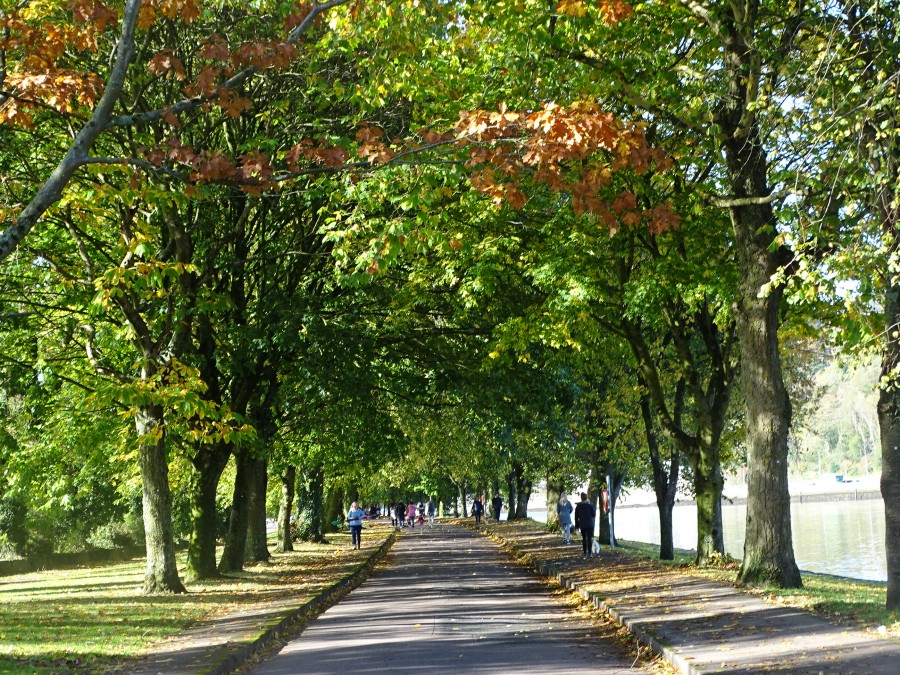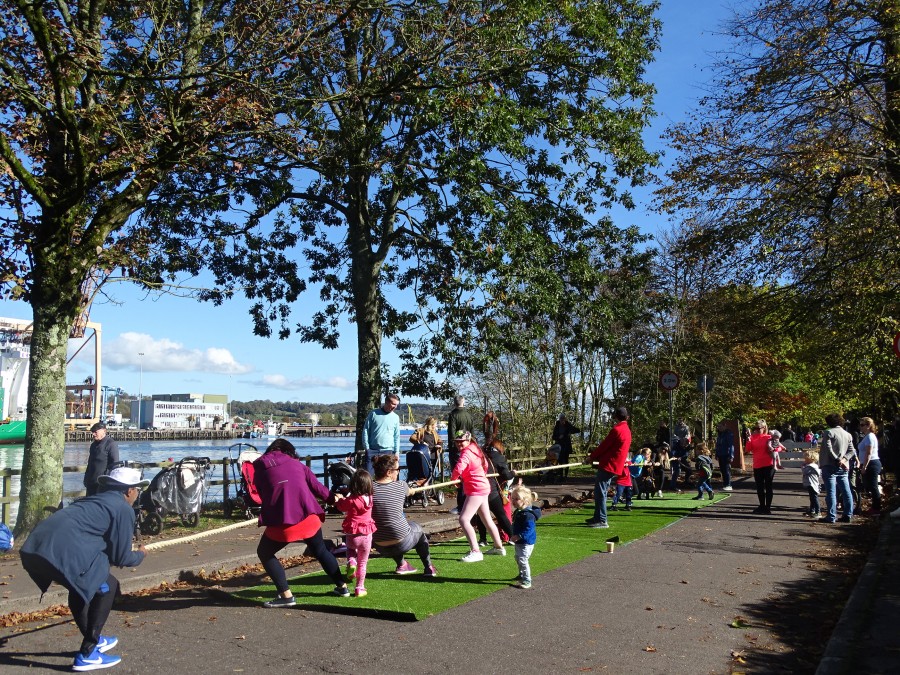Independent Cllr Kieran McCarthy has said that the return of 23 semi mature trees along the revamped Skehard Road is a great way to offset the hard concrete surfaces now present from the design of new and widened footpaths; “ I have had correspondence from many locals who were upset by the removal of the trees, which provided much character to the area; I realise they were take down due to their size and effect on local footpaths but they were part and parcel of the sense of place of the neighbourhood for decades. It seems more and more trees are being taken away rather than being added to the cityscape due to storms or roadworks. Clearly the city needs a stronger tree management programme. The new trees will be planted in the coming planting season (November to March).
The widening and renewal of Skehard Road Phase 2 (Parkhill Estate to Church Rd Junction including the C80 Junction) will be substantially complete by the end of this November. Construction of Skehard Road Phase 3 (the area between Church Rd Junction and the C80 Junction) is scheduled to commence in mid 2019. Land acquisition and detailed design for this phase is underway.
Cllr McCarthy added; “Locals have also come to me to take issue with the existing traffic lights situation. John Stapleton, Roads Engineer with Cork City Council has informed me that traffic signals at the junction of Skehard Road and Church Road are currently running on fixed time settings as the ground sensors have yet to be installed and the signal controller has yet to be programmed. This work is scheduled to be complete in the coming four weeks”.
Cllr McCarthy continued; “The Contractor recently added an additional period of time to allow pedestrians cross the road and from our observations on site. This appears to be operating satisfactorily however we will continue to monitor the situation. The new road layout including the additional lanes was created to improve the efficiency of the junction i.e. reduce traffic queuing. We’re confident that the new layout will significantly reduce traffic queuing when its complete and when the traffic signals are programmed and fully operational”.
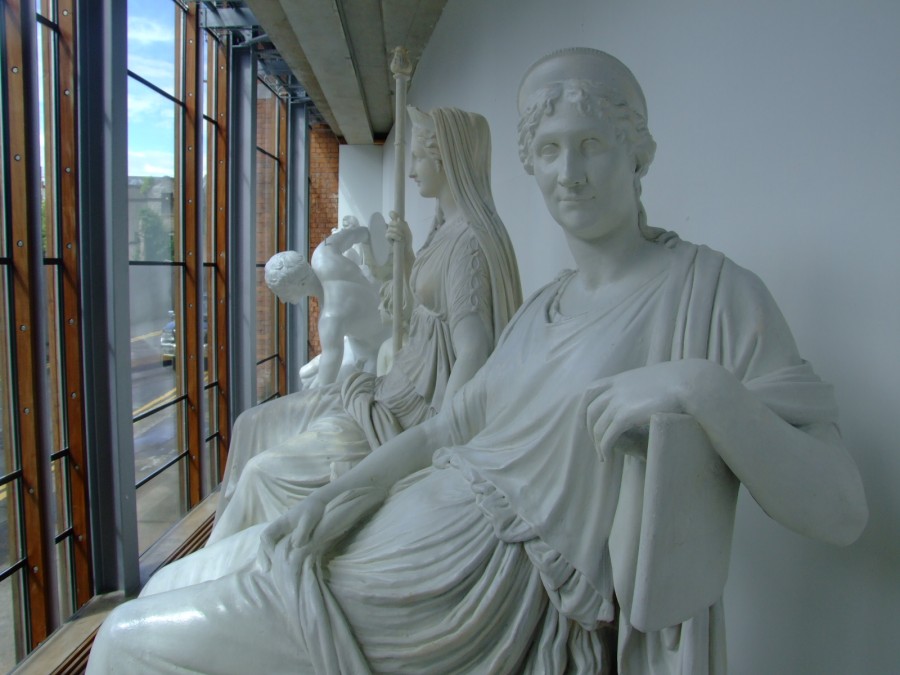
Kieran’s Our City, Our Town Article,
Cork Independent, 25 October 2018
A Gift from the Vatican – The Canova Casts
Two hundred years ago this week, a ship from the UK containing 219 sculpture casts arrived into Cork. The acquisition of classical casts made an important contribution to Cork burgeoning art scene and in today’s Crawford Art Galley a cross section of them form the centre of an impressive sculpture display. Their context and journey to Cork is a unique story. Circa 1810, Pope Pius VII was anxious to express his gratitude to the English people for the return to the Vatican Galleries of many masterpieces looted by Napoleon Bonaparte. The Pope commissioned Italian artist, Antonio Canova, to make a set of over one hundred casts from the classical collection in the Vatican.
Canova (1757-1822) was deemed the greatest sculptor of his time and his name was renown across Europe. A student of antiquity, he had interests in Roman restoration projects of artwork. His early work of a statuette of Apollo Crowning Himself, which he entered into a competition organised by the Venetian aristocrat Don Abbondio Rezzonico. This work led to a large successful line of marble statue commissions across Europe comprising Holland, Austria, Poland, Russia, and England. In France Napoleon Bonaparte was a patron of his commissioning large amounts of work and artistic depictions of Napoleon posing as the Roman God of War. Members of Napoleon’s family were also depicted in marble casts such as his sister, second wife and mother (appears in the Crawford Art Gallery). In 1802, be was given the post of Inspector-General of Antiquities and Fine Art of the Papal State.
As a diplomatic gesture, in 1812, a set of Canova casts were shipped to London by the Vatican as a gift to the Prince Regent, later George IV. The Prince showed a lack of appreciation towards his papal acquisitions and the casts lay firstly in the London Custom House and then in the basement of his residence in Carleton Gardens. William Hare, 1st Lord Listowel of Convamore, Co. Cork (beside the River Blackwater), was a patron of the arts and as friend of the prince suggested that they be donated as a gift to the people of Cork.
The Prince Regent donated the casts to the Society of Fine Arts in Cork City, whose premises was located on what is now the intersection of St Patrick’s Street and Opera Lane. An article in the Belfast Newsletter notes that the casts were shipped on Saturday 24 October 1818 – arriving a few days after. A contemporary account best tells the story of this event, more especially when it comes from a manuscript autobiographical sketch written by one of the greatest beneficiaries from the casts, Corkman Daniel Maclise.
“A former theatre once supported by the Apollo Society of Amateur Actors was fixed upon as the most suitable place for the reception of the valuable collection of casts. It was situated in a principal street, Patrick Street, and the stage was screened off by a well-painted scene of the interior of a Greek temple. The pit was boarded over and the gallery was partitioned off. The boxes remained only as they were, and the statues were arranged around the Parterre with much taste on moveable pedestals under the Superintendence of a London gentleman who was sent over for the purpose, and whose name happened appropriately enough to be Corkaigne”.
Shortly after the acquisition, the Cork Society of Fine Arts suffered financial difficulty and could not pay the rent of the premises in which the casts were kept. Under considerable embarrassment, they applied to the government for monetary aid. The Westminster Government and under the recommendation of the Lord Lieutenant of Ireland stated they could grant no aid but recommended them to amalgamate with the Royal Cork Institution. An arrangement was made that the Royal Cork Institution should attain the casts and pay the debt of £500-£600 that was contracted by the Society of Fine Arts. A compromise was made of £300 and the casts were moved to the Institution’s premises on Jameson Row.
For several years after, a Dr John Woodruffe used the casts as part of his classes in anatomy in the city. He leased a building in Margaret Street in the South Parish and offered a course of “Anatomical and Surgical Lectures”, which involved drawing and dissection. John welcomed all aspiring art students or medical students or members of the military. Young artists could develop their talent for drawing human figures. Two students Daniel Maclise and John Hogan went to have great careers in the art world. At the age of sixteen, Corkman Daniel Maclise (1806- 1870) finally exchanged a banking desk for the easel, managing to maintain himself by the sale of his sketches. His early works showed a marked attention to form rather than colour. His compositions tended to be set-pieces, composed of groups of figures telling a story. His first money was earned by drawing portraits of all the officers of the 14th Light Dragoons (a garrison of soldiers), who were then stationed in the city.
During his time as a student of John Woodruffe’s, Waterford man John Hogan (1800-1850) carved a pine-wood skeleton that remained long in use for Woodroffe’s anatomy lectures. By 1820, John Hogan had left Thomas Deane’s office to devote his career to wood-carving and sculpting. Hogan’s first patron was the Catholic Bishop of Cork, Dr Murphy, himself a friend of Antonio Canova. The Bishop kept him busy for a year, commissioning him to carve twenty-seven figures, three and a half feet high, of apostles and saints, which can now be viewed in SS Mary and Anne’s Cathedral as well as a carved copy of Leonardo de Vinci’s Last Supper in bas-relief for the altar.
Kieran’s new book, Cork in Fifty Buildings (2018, Amberley Publishing) is now available in Cork bookshops.
Kieran is also showcasing some of the older column series on the River Lee on his heritage facebook page at the moment, Cork Our City, Our Town.
Captions:
969a. Antonio Canova’s cast of Mother of Napoleon in the Crawford Art Gallery (pictures: Kieran McCarthy)
969b. Antonio Canova casts in the Crawford Art Gallery
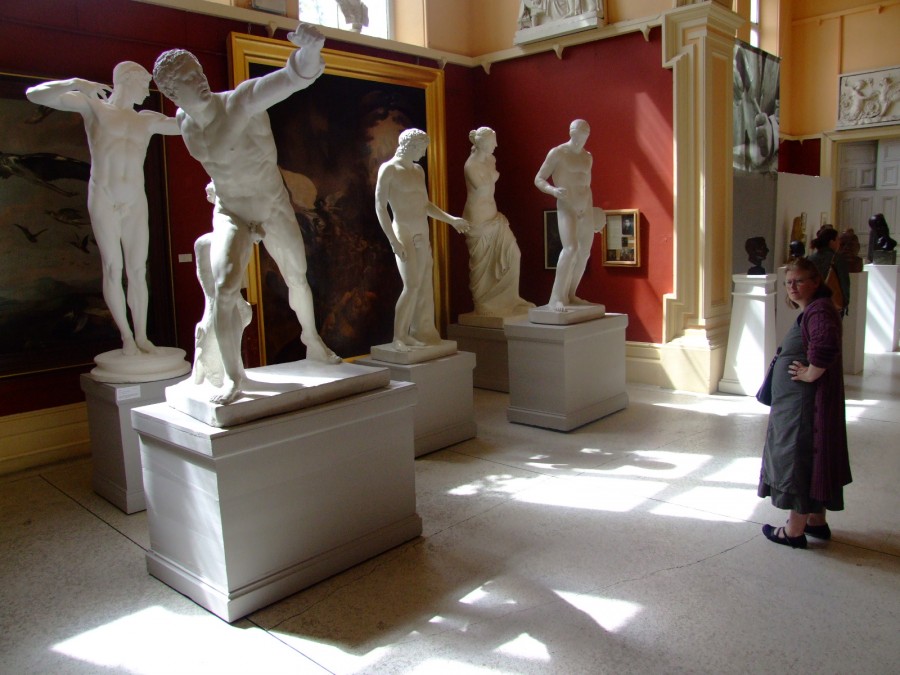
Douglas Road and Independent Cllr Kieran McCarthy continues his public heritage dissemination work online for the winter months. Kieran recently had a successful series of historical walking tours in different Cork neighbourhoods for October including Douglas. He also recently launched a new book entitled Cork in 50 Buildings. A third element of his heritage work this season relates to his heritage facebook site. Since early August this year Kieran McCarthy has been profiling the local histories of the River Lee valley on his heritage facebook page – Cork Our City, Our Town. Daily local history notes and historic images are posted and abstracted from Kieran’s publications on the river Lee over the past 12 years. The posts aim to showcase the multitude of local histories in the valley and to celebrate life in the valley. Cllr McCarthy noted: “the posts focus on the journey of the Lee and the key places of settlement, monuments and community leaders all the way along the valley. The posts contain lots of old local history pictures, past fieldwork & oral history testimony”.
The daily facebook posts also draw on a past book by Kieran and Seamus O’Donoughue on the Lee Hydro Electric Scheme. The work was published by the ESB to mark the 50th anniversary of Inniscarra Dam being commissioned. The facebook posts has pictures of the Lee Scheme being constructed and pictures of the ‘before and after’ of the affected landscape.
Kieran has also recently launched a facebook page for his local government work (“Cllr Kieran McCarthy”). It compliments his website kieranmcarthy.ie and twitter account @cllrkmac. Cllr McCarthy noted; “All aim to give constituents more information on my broad and ongoing work programs and interests within the city and region”.

Kieran’s Our City, Our Town Article,
Cork Independent, 18 October 2018
The Recruitment Dilemma
Sunday 20 October 1918 brought the supporters of Cork Sinn Féin and the World War I Recruitment Office clashing again at a recruitment meeting of the Grand Parade. The Cork Examiner recorded an angry crowd of some thousands present, who interrupted and prevented the speakers from their orations. Previous to the meeting military bands promenaded the principal streets. aeroplanes flew over the city and dropped literature in connection with condemnation of the sinking of the RMS Leinster. The vessel operated by the City of Dublin Steam Packet Company, served as the Kingstown-Holyhead mailboat until she was torpedoed and sunk by German submarine UB-123 on 10 October 1918.
Mr Maher Loughnan, BL who was given a quiet hearing, said he presided in the absence of Mr Harold Barry, the County High Sheriff. He considered it not only a pleasure but a duty to address them, for he was there for no imperial motive whatsoever.
Captain Irvine, on coming forward, was greeted with groans and hisses. For some time this continued from a section of some hundreds right in the centre of the crowd. After a while there was a lull, and Captain Irvine began by saying; “I have great pleasure in addressing you today, but before I speak to the subject proper I want to tell you of my little experience in the South. I came from the North, and there the South has a reputation of breaking up meetings. I don’t believe any Irishmen will prevent a speaker”. The men in the crowd then began to sing the Soldiers’ Song. The chairman appealed for order and asked them to give the gentleman a chance. The singing continued, and voices shouted; “You will get no recruits here”, and “You are like a statue-up there, we will give you no chance”, and counter shouts of “Up the khaki”, to which voices answered: “Up the rebels every time”.
Captain Irvine was unable to proceed and resumed his seat. A funeral passed; Captain Irvine, directed attention to the fact. His voice did not carry beyond the immediate area of the waggonette, and it was not until he stood to attention that the crowd became aware of the passing cortege.
Captain Irvine began again: “Men of Cork. I am here today to ask you to avenge the Leinster”. The hissing and booing broke out afresh, and Captain Irvine asked, “Do you cheer those men who sank the Leinster? Do you cheer the men who committed every outrage imaginable in this war?”. The singing now was taken up, and there was much hissing and jeering, and some counter-cheering. To this, Captain Irvine said: “Men must be absolutely misguided who cannot listen to sound argument – men who cheer an abominable outrage like the sinking of the Leinster. I am perfectly certain there are thousands of men in this assemblage who hate and detest every outrage that the Germans committed, and I think it a great pity that a few men in the crowd should try to stop a man telling that which he believes to be true, and give honest reasons why men should at the present moment, instead of cheering the Germans should help the Allied cause”.
The singing all the time continued, and some replies made by people in the crowd were not heard. Captain Irvine orated; “It is not sportsmanlike, or playing fair with the fair name of Ireland, which had a reputation for sportsmanship, and I believe at least the vast majority of Irishmen are sportsmen, and it seemed a great pity that a few should try to sally her fair name. If you wish to be represented at the Peace Conference as a nation, how can you expect it if you are not going to give the Allied cause, the winning cause, the fair play it deserves?”.
The rival parties ended up shouting at each other, and neither had the slightest chance of hearing a Lieutenant O’Riordan who was introduced. Freedom, nationality, and liberty was the cause he espoused, and he believed that to that sacred cause the young men of Cork were prepared to listen. He shouted above the din, “As an Irishman I ask the men of Cork to follow in the footsteps or those glorious sons of Cork, the Munster Fusiliers. That local regiment shed undying lustre on Cork, and their memory would live as Irishmen who had fought for the glory of their country”. Throughout his speech the noise was incessant, and the meeting looked angry J B Connolly, a prisoner of war in Germany, faced the meeting and also attempted to address it but with no better success.
As the speakers proceeded to leave, there was a surge towards them. They walked towards the City Hall, followed by a few hundred persons shouting and booing. They were pressing in on the speakers, and the police drew their batons. There was a general stampede, and in the rush some persons got baton strokes, while others dodged and narrowly escaped being trampled-on. The baton charge, which lasted for a few minutes, was indiscriminate, but as far as could be ascertained no one was injured. After some time the place cleared, and no further incidents took place.
Captions:
968a. Irish Soldiers of the 16th Division during World War I (source: Cork City Library)
968b. Irish Soldiers in the trenches on the western front of World War I (source: Cork City Library)
Kieran’s new book, Cork in Fifty Buildings (2018, Amberley Publishing) is now available in Cork bookshops.
Kieran is also showcasing some of the older column series on the River Lee on his heritage facebook page at the moment, Cork Our City, Our Town.

Thursday, 18 October 2018, Cork: A Hundred Years Ago, a sit down talk with Kieran exploring pictures and postcards, in association with Cork Age Friendly City, Firkin Crane, Shandon, 11am (free, duration, 90 minutes)
Saturday 20 October 2018, Our Lady’s Hospital, historical walking tour with Kieran; learn about the former Victorian asylum; meet at the gates of Our Lady’s Hospital, Lee Road, 11am (free, duration: two hours)
Sunday 21 October 2018, The Marina and Blackrock, historical walking tour with Kieran, learn about the development of the Marina walk, meet at grotto on Blackrock Pier, 12.30pm (free, one hour, as part of the Marina Play Sunday and Urban October)

Kieran’s Our City, Our Town Article,
Cork Independent, 11 October 2018
Stories from 1918: The Spanish Flu Arrives
The Spanish Influenza pandemic or Spanish flu was one of the devastating pandemics in human history. It resulted in an estimated 25 million death worldwide. It is said to have originated at a US army camp in Kansas in early March 1918 and spread to the front line of World War I with the infected soldiers. The first wave and strain of influenza was mild. However, the second wave came as the flu, and then transformed into pneumonia, which led to death. On being brought into Ireland it killed about 23,000 people in 1918. In particular, the deaths in Dublin were high – 250 deaths a week were recorded by November 1918. Local authorities across the country tried to secure more beds in hospitals and to recruit more doctors, many of whom were infected by the influenza.
Up to October 1918 Cork had been almost immune from the serious influenza epidemic that has levied such a toll in other Irish cities. Reports in the Cork Examiner on 23 October 1918 detailed that influenza had only appeared in Cork in a few isolated cases. The Medical Officer of Health at a meeting of the Public Health Committee, said a few cases had come under his observation. It had broken out in some rural districts. In the Carrigaline district no letters were being delivered owing to the local postman being confined to his sickbed.
The Lord Mayor of Cork, Thomas Butterfield, through the medium of the local press, advised people not to congregate together, and entertainments of all kinds were to be avoided. Those infected with the influenza were advised not to mix with others. The introduction of the epidemic into the schools and public institutions was to be prevented. Public meetings could not be held. The Medical Office of Cork Corporation remarked that the age of an infected person was an important factor. The mortality amongst the elder people was much higher than amongst the adults, and children took the disease in a mild form.
By the 29 October 1918 a very many fresh cases of influenza were reported in Cork and one death at least had been recorded. In the way of taking preventative measures some of the city schools had already closed down, and school inspectors noted a marked falling off in attendance. On visiting the homes of absent pupils, it was found by these inspectors that numbers of children were confined to bed.
As a precautionary measure University College, Cork, closed and remained completely closed for a fortnight. A Retreat, to be opened at the Honan Chapel for female students was postponed. Farranferris College closed at short notice as did the Carnegie Library (under the watchful eye of City Librarian James Wilkinson).
Up to the third week of October 1918, dispensary doctors in Cork City did not have to deal with very many cases at their dispensaries, not more than 35. In the poorer and vulnerable parts of the city the disease had not gained any major grip. One medical practitioner, commenting on this fact regarded it as unusual in the face of past experiences. He was of the opinion, however, that previous sufferers from the influenza were not immune from further attacks. The strain of influenza was very contagious. One media report highlighted that of a family of six, they were all stricken within a few short hours from the time that the first symptom appeared in one of their children.
The number of interments at the principal Cork burial grounds was about double the number daily interred in normal time. The number of requests made to Cork City hospitals from many parts of Ireland and Great Britain for nurses to cope with the epidemic in other centres was altogether in excess of the number that could be relieved for such duties.
A letter published in the Cork Examiner on 29 October 1918 revealed the heartfelt plea of a citizen to take the spread of the influenza epidemic seriously:
“Dear Sir, The death toll from the influenza epidemic throughout the country is rising steadily, and in Dublin alone the number of burials in Glasnevin Cemetery during the past week was 120 higher than the average normal weekly number- Cork, so far, seems to be escaping lightly, but we must not shut our eyes to the fact that the number of cases is increasing daily. I have medical authority for stating that prevention is better than cure, and reluctance to take steps to prevent the spread of the disease is criminal. Schools, of all kinds and places of entertainment. should be closed at once, without a day’s delay. If this is not done the disease will spread, and we shall be faced with a serious situation. The life of the most humble citizen is dear to me and as a father of a large family, I claim the right to demand that everything essential be done now. The students of the University College, Dublin, are undergoing preventive treatment by inoculation, and I would strongly suggest that our local medical gentlemen obtain supplies of the influenza vaccine, so that any citizen who wishes may be inoculated. Of course, those in a position to pay a reasonable fee for this should be prepared to do so. The laboratories of our University College could be utilised for the preparation of the culture-Faithfully yours, CITIZEN”.
Kieran’s new book, Cork in Fifty Buildings (2018, Amberley Publishing) is now available in Cork bookshops.
Captions:
967a. Harpur’s Lane c.1900 (now Half Moon Street) from Harpur’s Weekly newspaper (source: National Library, Dublin)
967b. Picture of new James Wilkinson mural on Anglesea Street; He was the first City Librarian of Cork Carnegie on Anglesea Street from 1905-1920; the work was funded by Cllr Kieran McCarthy and designed and painted by Kevin O’Brien and Alan Hurley (picture: Kieran McCarthy)
Talks and Walks with Kieran, October 2018, (all free, average duration: 2 hours)
Saturday, 13 October, The Friar’s Walk, meet at Red Abbey tower, Mary Street, off Douglas Street, 11am
Sunday 14 October, The Lough & its Curiosities; meet at green area at northern end of The Lough, entrance of Lough Road to The Lough; 2pm (note time change)
Thursday, 18 October, Cork: A Hundred Years Ago, A sit down talk exploring old pictures and postcards, in association with Cork Age Friendly City, Firkin Crane, Shandon, 11am
Saturday 20 October, Our Lady’s Hospital; meet at the gates of Atkins Hall, former Our Lady’s Hospital, Lee Road, 11am


Kieran’s Our City, Our Town Article,
Cork Independent, 4 October 2018
The Problem of a Milk Supply
One hundred years ago this week, the provision of milk to citizens became a contentious issue. Milk was an important commodity for citizens especially with a rationing system in place arising from the ongoing war. Annually Cork City needed circa 500,000 gallons of milk. Over 20 creameries in county Cork supplied the city and region’s needs.
The Cork Dairy Farmers’ Association were an effective lobby group, which was established in September 1913 with a determined effort to organise themselves and push for the best prices for their member’s milk. They met on Saturday 5 October 1918 to consider the action of the Local Cork Food Control Committee earlier in that week who fixed the milk price at a lower level than expected for the month of October. The proceedings were private, but an official report was supplied later to the Cork Examiner. The meeting was held at the Marlboro Street Hall with Mr Joseph Forrest, chairman presiding.
It was unanimously decided that the price fixed by the Local Food Control Committee was entirely inadequate, and that members all decided to lessen their system of farming output straight away. It was highlighted that beef and butter production would pay better than milk. Several farmers declared they would get out of the dairy cow industry. It was decided to cease supply to the city on the subsequent Wednesday. Exceptions, however, were to be made in the case of hospitals, asylums, workhouse, and prisons. Worry hit in across the city for fear of no milk.
The Food Control Committee for Ireland in their published order prescribed the maximum price applicable, on the occasion of a sale, other than a retail sale, of milk produced in any part of Ireland. They oversaw prices of milk produced within the limits of the Dublin Metropolitan Police Area, and within the boundaries of the County Boroughs of Belfast, Cork, Londonderrv and Waterford. Prices were set at the rate of 1s 3d per gallon from the 7 to 31 October 1918. During the months of November and December, the rate of 1s 10d per gallon was set and for January, February and March 1919 the rate of 2s per gallon was established.
Mr John Horgan, Chairman of the Local Food Control Sub-Committee, went to Dublin to present the views of the Cork Dairy Farmers’ Association and their threat to cut off the supply from the city. Elsewhere there were other comments made from members of the Cork association who presented a different view that the decision of the body was not unanimous, and that the threat to supply no milk to the people was only supported by a very small proportion of the members. It was also learned that large numbers of vendors and housekeepers in all parts of the city had received promises from their suppliers that there would be no discontinuance in their supplies.
The situation was also discussed at a special general meeting of the Cork Milk Vendors’ Federation at Stephen’s Hotel. Mr T O’Donovan (chairman) presided, and there was a large attendance. The Chairman expressed regret at the ongoing dispute, and sincerely trusted that the farmers and Food Control Committee would arrive at an amicable settlement. Their members as distributors deemed themselves in an extremely awkward position, because if no settlement was reached they would had no option but to refuse to supply milk unless it were delivered to them at the controlled price. They were fully aware to the serious consequences that would be incurred owing to a shortage of milk, especially in the case of children.
By the 12 October the disagreement between the Cork Dairy Farmers’ Association and the local Food Control Committee, had been settled. Mr Patrick Crowley, of the Cork Industrial Development Association, and Mr Richard Wallace, of the Poor Law Board, were active in an effort to discover some solutions. They invoked the assistance of Capuchin priest Fr Thomas Dowling (see previous columns) and arranged a meeting between him and the Cork Association.
Father Thomas made a strong appeal to the farmers, to alter their position and to continue the milk supply to the city for the sake of the sick, the children, and the poor. He pointed out that he was there not to discuss whether the farmers could or could not supply milk at the prices fixed for them by the local Food Committee. He promised the Association that if they would listen to his appeal he would exercise every influence to see that their case had full and fair consideration.
A considerable discussion followed, in which the members of the Cork Dairy Farmers’ Association dwelt upon their grievances. Finally, the meeting agreed to accede to the request. In announcing it, the members of the Association detailed they were not yielding to any public uproar but would give in to the appeal of Fr Thomas. Following the conference with Fr Thomas, the news was sent by messengers. and telegrams to the various districts authorising a renewal of the supplies immediately, so that a return to a normal condition of supply would be immediately implemented.
Kieran’s new book, Cork in Fifty Buildings (2018, Amberley Publishing) is now available in Cork bookshops.
Captions:
966a. Meadowvale Creamery, Charleville, c.1900 (source: National Library of Ireland, Dublin)
966b. Map of creameries in south west Ireland, 1910, adapted from F H A Aaalen, K Whelan, M Stout, 1997, Atlas of the Irish Rural Landscape, Cork University Press (source: Cork City Library)
Talks and Walks with Kieran, October 2018, (all free, average duration: 2 hours)
Saturday 6 October, Douglas and its history, meet in the carpark of Douglas Community Centre, 11am
Saturday, 13 October, The Friar’s Walk, meet at Red Abbey tower, Mary Street, off Douglas Street, 11am
Sunday 14 October, The Lough & its Curiosities; meet at green area at northern end of The Lough, entrance of Lough Road to The Lough; 2pm (note time change)
Thursday, 18 October, Cork: A Hundred Years Ago, A sit down talk exploring old pictures and postcards, in association with Cork Age Friendly City, Firkin Crane, Shandon, 11am
Saturday 20 October, Our Lady’s Hospital; meet at the gates of Atkins Hall, former Our Lady’s Hospital, Lee Road, 11am
